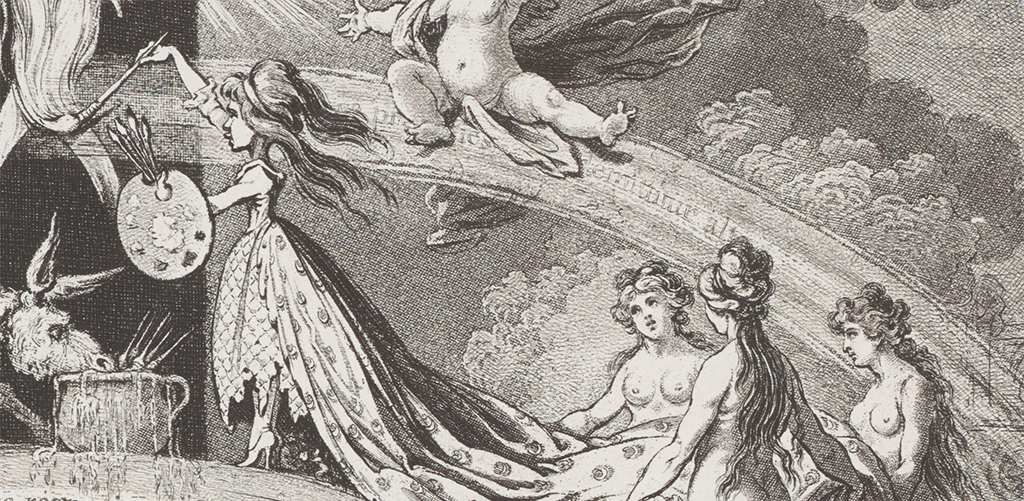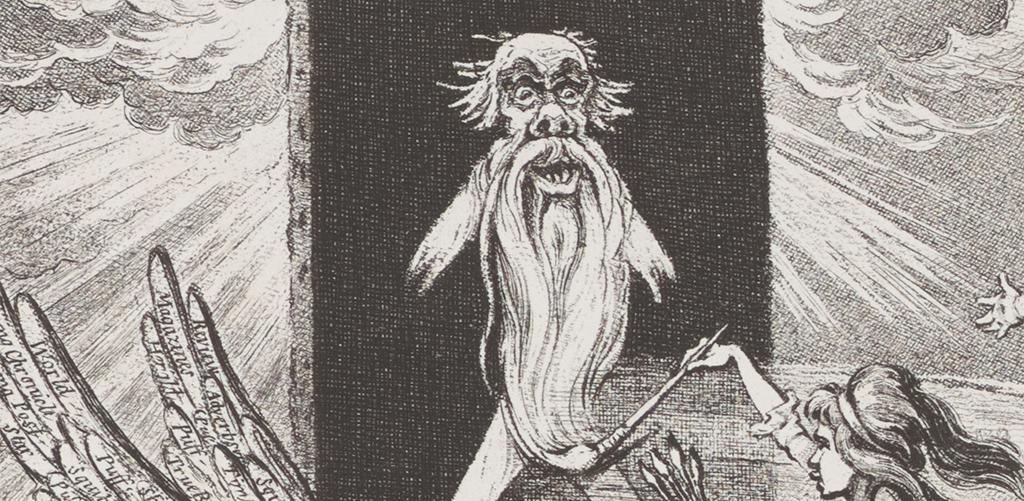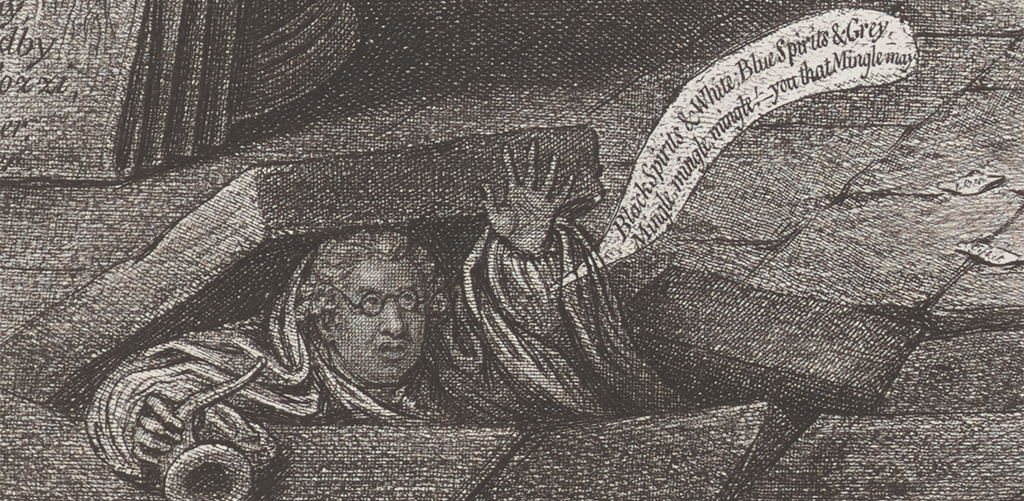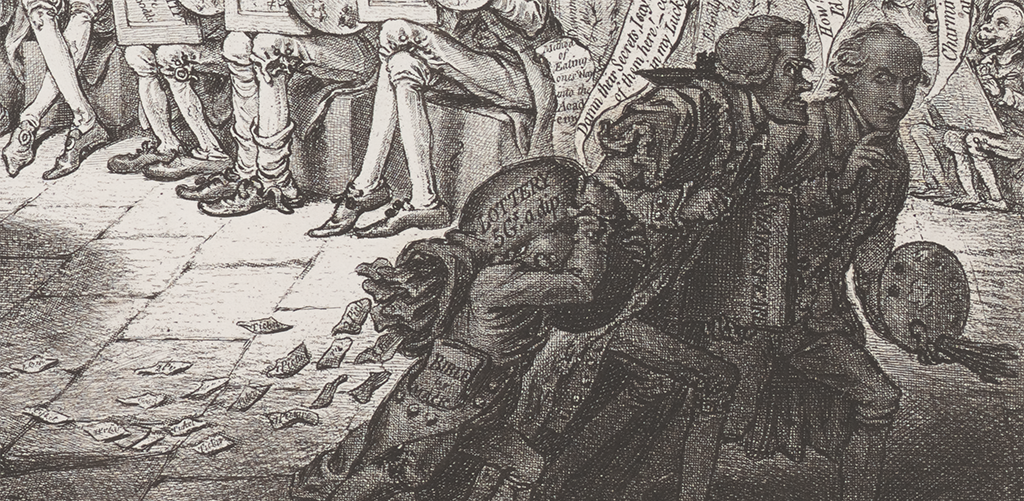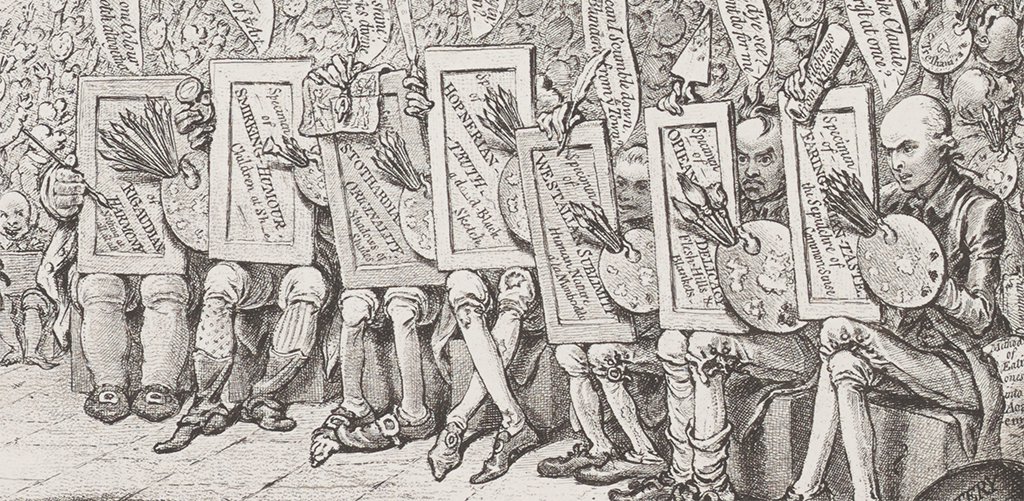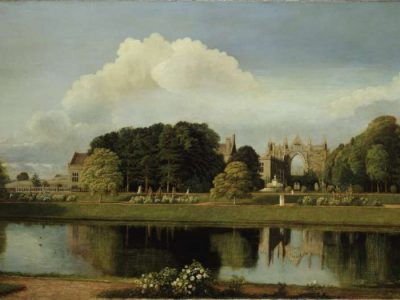A closer look: a masters’ secret for 10 guineas
In 1796, leading artists from the Royal Academy fell victim to an incredible hoax about an art masters' secret, masterminded by Ann Jemima Provis.

James Gillray, Titianus Redivivus; – or – The Seven-Wise-Men Consulting the New Venetian Oracle – A Scene in ye Academic Grove No.1
Artists in the 18th century revered Venetian masters like Titian and Tintoretto. Some even believed that there was a secret to their painting methods. Whatever this trick of the trade was, they thought this masters’ secret had been lost in time. That is, until a young miniaturist painter by the name of Ann Jemima Provis and her father, Thomas Provis, came on the scene.
The Provis family claimed to have ‘rediscovered’ the lost secret of Renaissance masters. They then managed to convince great artists from the Royal Academy, including its then president, Benjamin West, of their ‘discovery’. Thomas Provis said he had found the Venetian secret ‘in an ancient Italian manuscript’. For 10 guineas, each eager artist would get a personal demonstration of the techniques described in the manuscript. Ann Provis, an artist in her own right, would be the one to show them how it was done.
Afterwards, artists who learnt the ‘secret’ eventually exhibited their paintings. Critics of the era correctly came to the conclusion that the manuscript was a fraud. This became evident since the Provis recipe did not transform these works of art into the rich and luminous masterpieces of the Renaissance.
Benjamin West, as President of the Royal Academy, became the humiliated protagonist of the story when it broke. The press, bawdy songs and this wonderful satirical print by James Gillray immortalised West’s embarrassment.
Interestingly, the Provis family seem to have avoided any punishment for the (quite ingenious) hoax. There is no record that they were ever prosecuted.
Did you know?
Contemporary art historians have been able to assemble the three-part recipe the Provises cooked up. First was the application of a dark red ground, or foundation layer, to the canvas. Then, they used thin linseed oil to bind the paint pigments. Finally, they added a mix of ivory black and Prussian blue under glazes of bright colours.
